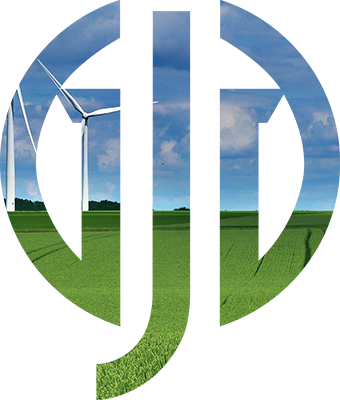ENERGY & ENVIRONMENT DIVISION – GJG
Jacques Gaddarkhan, founding President of GJG, understands better than anyone that the future of Guadeloupe and more generally of the Caribbean rests on a firm and unwavering willingness to review the way it produces and consumes. Without an energy transition by the largest number of people towards clean and renewable energies as well as a flawless maintenance of beaches, coastal areas and road infrastructures, the environmental consequences could lead to a loss of touristic interest in the region, which would result in insurmountable economic difficulties for the local population.

KEY ENERGY FIGURES IN GUADELOUPE
Guadeloupe is characterized by the diversity in its different sources of energy. In addition to the traditional fuel oil and coal, which today still account for more than 2/3 of the energy resources producing electricity, we see a whole range of renewable resources emerging, including wind, geothermal, biomass, hydroelectric and photovoltaic energy. In 2018, the electricity production from renewable energy reached 21.24% of all electricity generated on the island, i.e. nearly 362 GWh. In 2012, electricity production from ‘clean’ energy only represented 15.5% of total production, i.e. a little less than 269 GWh, which corresponds, in 6 years, to an increase of nearly 25% of this clean production, without any negative impact on the environment. Clearly, a new awareness has arisen for the greater good of the island and its inhabitants.
GUADELOUPE: A BREEDING GROUND FOR THE DEVELOPMENT OF WIND ENERGY
Thanks to its tradewinds, Guadeloupe is an ideal ground for the development of wind energy, whose production generated, in 2012, 3% of the total electricity production. The Guadeloupean climate is undoubtedly conducive to the development of wind energy, but the plants must comply with anti-seismic and anti-cyclonic safety standards, which requires the contracted companies to install and maintain the island’s wind farms to the highest standards and have real technical know-how. Through its 25-megawatt wind farm, GJG confirms its position as an active partner in this journey towards a cleaner future, while addressing the specific climatic challenges of the region. Currently, wind energy accounts for more than 6% of Guadeloupe’s electricity production, which is a quarter of the locally produced renewable energy.
As Mr. Jacques Gaddarkhan explains, the future of the island lies in its propensity to stay clean and to always favor the use of renewable energy while minimizing greenhouse gas emissions as much as possible.
GUADELOUPE: A REGION EXPOSED TO MAJOR NATURAL HAZARDS
Located in the heart of the Caribbean, Guadeloupe is as beautiful and rich in breathtaking landscapes as it is vulnerable to the vagaries of climate and major natural hazards such as earthquakes, volcanic eruptions (notably the still active Soufrière volcano), cyclones (think about the infamous Hurricane Hugo which in 1989 ravaged the island and the region to end its course in North Carolina), and frequent floods. These floods can be either torrential, during the flooding of rivers located on volcanic massifs, or pluvial, due to poor maintenance of gullies, which no longer play their part as an evacuating outlet during the rainy season, or finally marine, linked to tides and cyclonic swells, mainly impacting the coastlines. Last but not least, Guadeloupe’s seismic activity exposes the island to the risk of tsunamis. To say that Guadeloupe is a region exposed to natural hazards is an understatement, and local and regional authorities are heavily involved in terms of prevention, communication and protection of the population. Although many old houses and infrastructures do not comply with safety standards, constructions today follow strict guidelines. GJG rigorously strives to meet these standards and even better, its constructions and renovations are certified HQE, (High Environmental Quality). GJG proves through its top-quality realizations, and through the use of innovative and high-performance materials, its willingness to respect both the environment and the quality of life of the population by guaranteeing the economic performance of its constructions and renovations, proposing a holistic approach to local and regional authorities.
GJG: AN ENVIRONNEMENTAL FOCUS
The commitment to adopt environmentally responsible practices is part of GJG’s very DNA. By the daily collection of household and green waste, the road maintenance by pruning trees and cleaning roads, the recycling of waste, the beach maintenance, the development of the park road using solar energy, the management of wind farms, but also through its HQE certification, GJG shows that all its activities are focused around a green approach.
Simply listing GJG’s various activities confirms its strong will to preserve Guadeloupe and leave future generations with a cleaner, safer island, ready to tackle the challenges ahead.
GJG works towards a better future by putting everything in place on a daily basis, so that each day can be better and more beautiful than the day before.GJG prépare un avenir meilleur en mettant quotidiennement tout en œuvre pour que chaque lendemain soit plus beau que la veille.
